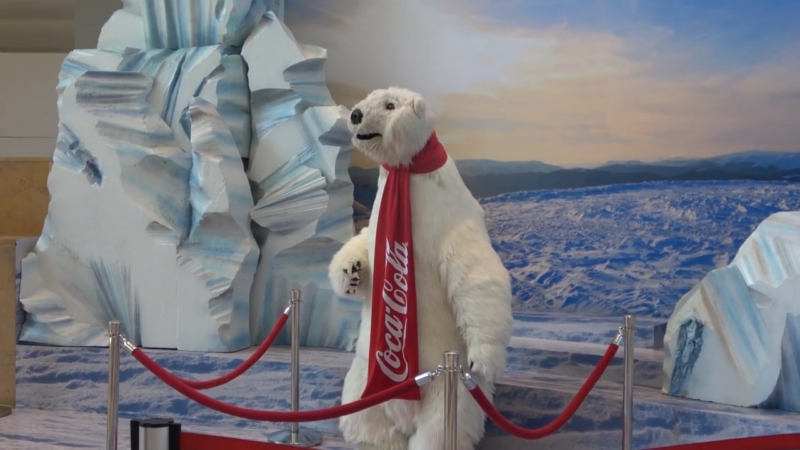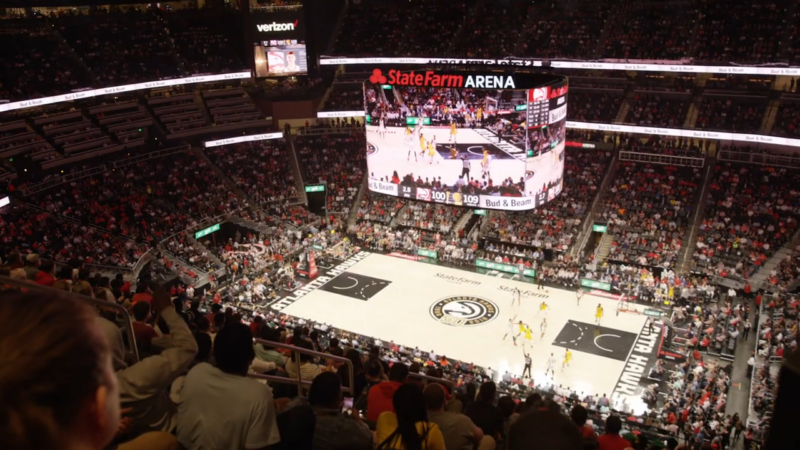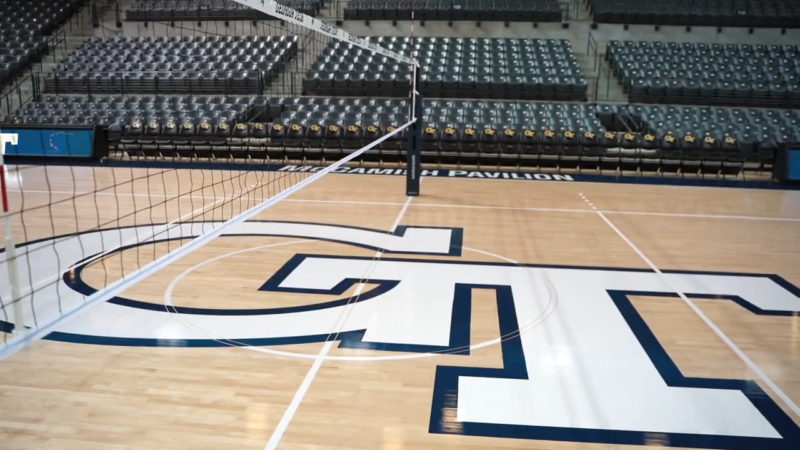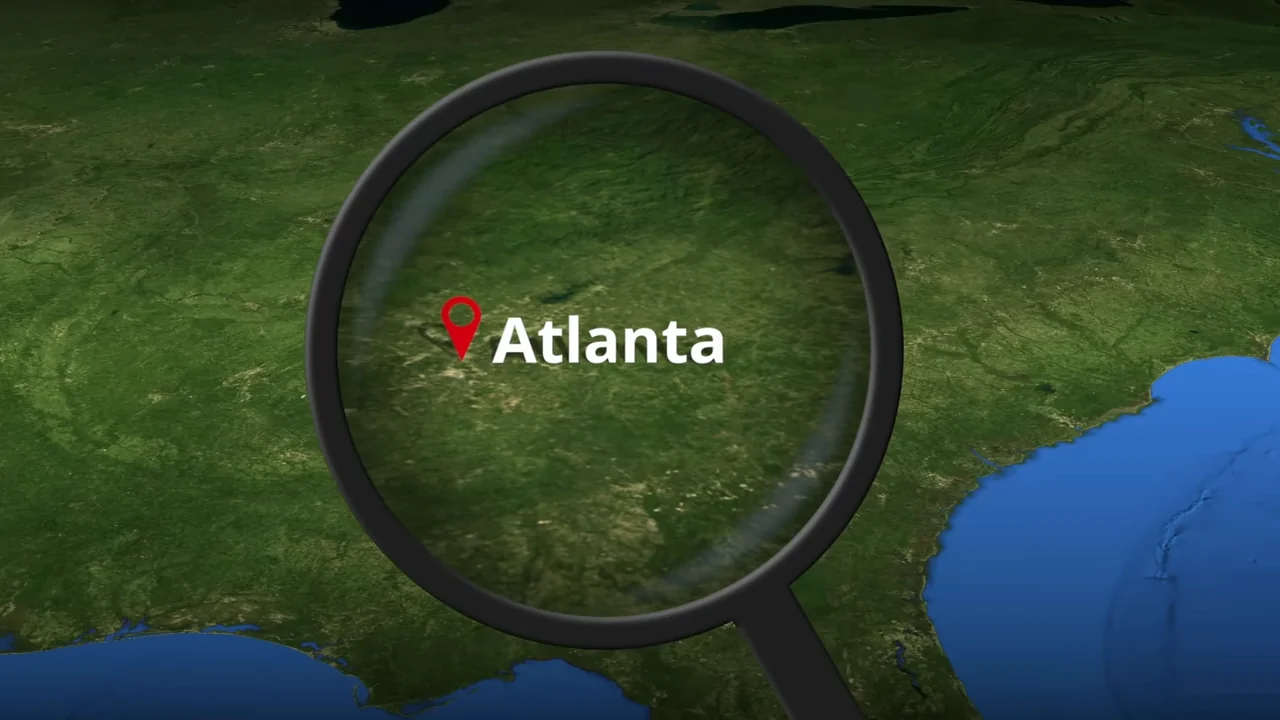Atlanta is the capital and largest city of Georgia, a state in the southeastern United States bordered by Florida to the south and with an Atlantic Ocean coastline in the southeast.
Atlanta lies in the northwestern part of Georgia, nestled in the foothills of the Appalachian Mountains, southeast of the Chattahoochee River.
It is located approximately 345 miles (555 km) northwest of Jacksonville and 470 miles (760 km) northeast of New Orleans.
According to the World Population Review, Atlanta’s population increased to over 514,465 in 2025, reflecting an annual growth rate of 0.71%.
However, other sources, like Census.gov, estimate the population at around 498,715.
As Georgia’s capital, Atlanta serves as a major cultural and economic center and continues to attract new residents.
The metro area is experiencing even faster growth, with a population of approximately 6,193,000 in 2025, underscoring a steady expansion trend in recent years.
Table of Contents
ToggleGeography of Atlanta

Atlanta covers an area of 134 square miles (347.1 km²), with 133.2 square miles (344.9 km²) of land and 0.85 square miles (2.2 km²) of water.
Located in the Deep South within the southeastern United States, Atlanta sits among the Appalachian foothills at an elevation of 1,050 feet (320 m), making it the highest major city east of the Mississippi River.
The city straddles the Eastern Continental Divide, causing rainwater on the south and east sides to flow to the Atlantic Ocean, while water on the north and west sides drains into the Gulf of Mexico.
Location and Proximity to Nearby Cities
Atlanta is:
- 21 miles (34 km) southeast of Marietta
- 27 miles (43 km) southwest of Alpharetta
- 146 miles (235 km) southwest of Greenville, South Carolina
- 147 miles (237 km) east of Birmingham, Alabama
- 245 miles (394 km) southwest of Charlotte, North Carolina
“City of Trees”
Despite a loss of tree canopy between 1973 and 1999, Atlanta has the densest urban tree coverage of any major U.S. city.
Often called the “City of Trees,” this forested setting is notable within an urban environment.
Cityscape and Architecture
Atlanta’s skyline, especially in Midtown and Downtown, is marked by modern and postmodern architecture.
Buildings designed by architect John Portman, such as the Westin Peachtree Plaza and Atlanta Marriott Marquis, define the skyline.
The tallest building, the Bank of America Plaza, stands at 1,023 feet (312 m).
- Downtown houses government offices, sporting venues, and tourist attractions.
- Midtown is home to art institutions, law firms, and cultural attractions.
- Buckhead, the city’s uptown district, is known for its urbanized core along Peachtree Road and upscale residential areas.
Neighborhoods and Gentrification
Atlanta has 242 official neighborhoods, ranging from historic streetcar suburbs to industrial areas transformed into modern spaces.
Gentrification, which began in the 1970s, has significantly shaped areas like Old Fourth Ward and Inman Park, especially following the city’s preparation for the 1996 Olympics.
Climate of Atlanta
[10:05 PM ET] Latest radar imagery showing some light snow flurries moving into portions of NW GA from S TN. No accumulations expected though a very light dusting cannot be ruled out at the higher elevations. ❄️ #gawx pic.twitter.com/SaVNwIpBFg
— NWS Atlanta (@NWSAtlanta) December 3, 2024
Atlanta has a humid subtropical climate with four distinct seasons.
Winters are generally mild with occasional snowfall, while summers are hot and humid.
The average annual precipitation is 50.43 inches (1,281 mm), with most rainfall evenly spread throughout the year.
Month
Average High °F (°C)
Average Low °F (°C)
Average Rainfall (inches)
Average Snowfall (inches)
Average Sunshine Hours
Jan
54.0 (12.2)
35.6 (2.0)
4.59
1.0
164.0
Feb
58.2 (14.6)
38.9 (3.8)
4.55
0.4
171.7
Mar
65.9 (18.8)
45.3 (7.4)
4.68
0.4
220.5
Apr
73.8 (23.2)
52.5 (11.4)
3.81
0.0
261.2
May
81.1 (27.3)
61.3 (16.3)
3.56
0.0
288.6
Jun
87.1 (30.6)
68.6 (20.3)
4.54
0.0
284.8
Jul
90.1 (32.3)
71.8 (22.1)
4.75
0.0
273.8
Aug
89.0 (31.7)
71.3 (21.8)
4.30
0.0
258.6
Sep
83.9 (28.8)
65.9 (18.8)
3.82
0.0
227.5
Oct
74.4 (23.6)
54.9 (12.7)
3.28
0.0
238.5
Nov
64.1 (17.8)
44.2 (6.8)
3.98
0.0
185.1
Dec
56.2 (13.4)
38.4 (3.6)
4.57
0.4
164.0
Year
73.2 (22.9)
54.1 (12.3)
50.43
2.2
2738.3
Atlanta experiences tornadoes infrequently, though an EF2 tornado struck the city in 2008.
Ice storms are more common than snowfall, with a major event occurring in January 1973.
Parks of Atlanta
Atlanta has 343 parks covering 3,622 acres, with 77% of residents living within a 10-minute walk of one.
Key parks include Piedmont Park, Westside Park (the largest at 280 acres), Centennial Olympic Park, Grant Park (home to Zoo Atlanta), and Chastain Park with its amphitheater.
The Chattahoochee River National Recreation Area provides river access for recreation, and the BeltLine, a 22-mile former rail corridor, has added 40% more park space.
For recreation, Atlanta offers six public golf courses, 182 tennis courts, river access for watersports, and a large skate park at Historic Fourth Ward Park.
The Atlanta Botanical Garden, near Piedmont Park, features diverse plant exhibits and formal gardens.
Population
In 2025, Atlanta has a population of 514,465, growing at an annual rate of 0.71%, with a 2.91% increase since the 2020 census, which recorded 499,896 residents making it a sagnificant part of the nation.
The average household income is $128,965, and the poverty rate is 17.73%. Atlanta’s median age is 33.6 years.
As Georgia’s capital and largest city, Atlanta is the economic and cultural hub of its metro area, boasting a GDP of $276 billion, ranking 10th in the nation.
Atlanta’s urban population is about 4.5 million, while the metro area has 5.6 million residents, making it the 9th largest in the U.S. The larger Combined Statistical Area (CSA) holds 6.2 million people.
- Atlanta has one of the highest LGBT populations per capita, with about 4.2% identifying as gay, lesbian, or bisexual.
- The city is the 2nd largest majority-Black metro area in the U.S., though its Black population decreased from 61.4% in 2000 to 54% in 2010, while the White population grew from 31% to 38%.
Originally inhabited by Cherokee and Creek Indians, the area was settled in the 1830s when the Western and Atlantic Railroad was established.
Originally known as Terminus and later Thrasherville, it was eventually named Atlanta in 1847.
The Civil War greatly impacted Atlanta, leading to its burning and subsequent rebuilding. By the 1880s, Atlanta had surpassed Savannah as Georgia’s largest city.
Racial Demographics of Atlanta

Comparison of Atlanta to Other Major Cities in Georgia
City
Rank
2025 Population
2020 Population
Population Density (per sq. mi)
Area (sq. mi)
Growth Rate (%)
Type
Atlanta
1
514,465
498,771
3,804
135.3
0.71%
City
Augusta
2
200,512
201,805
663
302.3
-0.18%
Township
Columbus
3
200,167
202,432
925
216.5
-0.85%
City
Macon-Bibb County
4
156,337
156,126
627
249.4
-0.11%
Township
Savannah
5
147,845
147,980
1,358
108.9
0.07%
City
Athens
6
129,089
128,414
1,109
116.4
0.36%
Township
South Fulton
7
111,823
111,030
1,203
93.0
0.81%
City
Sandy Springs
8
105,001
107,634
2,788
37.7
-0.75%
City
Roswell
9
91,293
92,876
2,242
40.7
-0.45%
City
Warner Robins
10
85,853
82,182
2,249
38.2
1.56%
City
Atlanta, with a population of 514,465, is significantly larger than other cities, with more than twice the population of the second-largest city, Augusta.
It has growth rate of 0.71% is modest but positive, similar to cities like South Fulton (0.81%). Warner Robins has the highest growth rate at 1.56%, while Columbus and Sandy Springs are experiencing declines according to sources.
Atlanta is densely populated at 3,804 people per square mile, higher than all other cities except Sandy Springs (2,788), Roswell (2,242), and Warner Robins (2,249).
Cities like Augusta and Macon have far lower densities, indicating more spread-out populations over larger areas.
As the state’s capital and economic center, Atlanta is not only larger but also plays a more central role in Georgia’s economy and culture compared to these other cities.
Attractions of Atlanta
Georgia Aquarium

The Georgia Aquarium is the largest aquarium in the Western Hemisphere and a must-see attraction in Atlanta.
Home to a diverse collection of marine life, it features a male whale shark, the largest known living fish species.
The aquarium also offers interactive exhibits and conservation programs, making it a top destination for visitors of all ages.
National Center for Civil and Human Rights
View this post on Instagram
A post shared by The National Center for Civil and Human Rights (@ctr4chr)
This museum is dedicated to the civil rights movement in the United States and globally.
It showcases the struggles and achievements of activists fighting for equality and human rights, offering powerful exhibits and interactive experiences that educate and inspire.
Martin Luther King Jr. National Historic Site

The historic site preserves several buildings significant to Dr. Martin Luther King Jr.’s life, including his childhood home and the original Ebenezer Baptist Church.
This site honors the legacy of Dr. King and provides a deeper understanding of his contributions to the civil rights movement.
Margaret Mitchell House and Museum
Located in Midtown, this museum was once the home of Gone with the Wind author Margaret Mitchell.
Visitors can explore the apartment where she wrote her famous novel, along with exhibits showcasing her life and literary legacy.
Underground Atlanta

Underground Atlanta is a historic shopping and entertainment district located in the heart of the city.
Known for its unique shops and dining options, it also has a lively nightlife scene, though it has faced challenges over the years and has a mixed reputation.
High Museum of Art
The High Museum of Art is Atlanta’s premier art institution and one of the most significant in the Southeast.
Located in Midtown’s arts district, it houses a vast collection of American, European, African, and contemporary art.
The museum is a division of the Woodruff Arts Center.
Atlanta History Center

This museum offers an in-depth look at Georgia’s history, with extensive exhibits and historic homes like the Swan House.
Founded in 1926, it includes research archives and various exhibits that cover the state’s Civil War history, folk arts, and more.
Jimmy Carter Presidential Library and Museum

Dedicated to former President Jimmy Carter, this museum contains his presidential papers, memorabilia, and a full-scale replica of the Oval Office.
The library provides insight into Carter’s presidency and humanitarian work.
Children’s Museum of Atlanta
A hands-on museum designed for children ages 3-9, the Children’s Museum offers interactive exhibits that encourage play and learning.
It’s an ideal destination for families with young children.
World of Coca-Cola

This museum is dedicated to the history and cultural impact of Coca-Cola, featuring memorabilia, interactive displays, and tasting stations.
The World of Coca-Cola showcases the brand’s influence worldwide and offers a glimpse into its marketing legacy.
Fox Theatre

Originally a 1920s movie palace, the Fox Theatre is now a popular performing arts venue in Atlanta, hosting Broadway shows, concerts, and other major events.
Known for its ornate, Moorish-inspired architecture, it’s a landmark in Atlanta’s cultural scene.
Alliance Theatre
We’re honored to be led by half of this power couple! We even get to work with the other half as a guest director from time to time! Read about Keith and Tinashe’s personal and professional journey in ArtATL’s feature article: https://t.co/tmki5h755x
— Alliance Theatre (@alliancetheatre) November 26, 2024
As part of the Woodruff Arts Center, the Alliance Theatre is Atlanta’s leading theater company, producing a variety of plays and performances.
It has earned a national reputation for high-quality productions and community engagement.
The Tabernacle

This concert hall, located in Downtown’s Centennial Olympic Park District, is known for its eclectic music performances and lively atmosphere.
Once a church, it has been transformed into one of Atlanta’s top live music venues.
Peachtree Center

Located in Downtown, Peachtree Center is a major shopping complex featuring specialty shops, restaurants, a food court, and event spaces.
It’s a convenient stop for shopping and dining in the heart of the city.
CNN Center
The headquarters of CNN offers behind-the-scenes tours where visitors can explore the news network’s broadcasting operations.
It’s a unique destination for those interested in media and journalism.
Piedmont Park
Piedmont Park is Atlanta’s iconic urban park, offering green spaces for a range of activities such as biking, jogging, picnicking, and organized sports.
Located between Midtown and Virginia Highland, it is one of the city’s most popular public parks.
Centennial Olympic Park

Originally built for the 1996 Olympics, this public park now serves as a central gathering spot for locals and visitors.
It hosts concerts, festivals, and seasonal events and includes attractions such as the Fountain of Rings.
Atlanta Botanical Garden
Garden Lights at Atlanta Botanical Garden is really something pic.twitter.com/SSbregXecR
— harrison (@harrisoninhd) November 28, 2024
Adjacent to Piedmont Park, this 30-acre botanical garden features a variety of themed gardens, a conservatory, art installations, and seasonal events.
Its Canopy Walk provides a unique perspective of Atlanta’s lush landscape.
Six Flags Over Georgia

A major amusement park near Atlanta, Six Flags Over Georgia offers roller coasters, shows, and family-friendly attractions themed around Warner Bros. and DC Comics characters.
Zoo Atlanta

Zoo Atlanta is one of only four U.S. zoos that house giant pandas.
The zoo features a wide range of animals, conservation programs, and interactive exhibits, making it a top destination for families and wildlife enthusiasts.
Georgia State Stadium
Previously Turner Field, this stadium now hosts Georgia State University’s football team. It’s a key venue for college football in the area.
State Farm Arena

A multi-purpose indoor arena, State Farm Arena is home to the Atlanta Hawks basketball team and hosts concerts, sporting events, and other large-scale performances.
Mercedes-Benz Stadium
This state-of-the-art stadium is home to the Atlanta Falcons (NFL) and Atlanta United FC (MLS). Known for its innovative architecture, it’s a premier venue for football and soccer fans.
McCamish Pavilion

Known as The Thrillerdome, McCamish Pavilion is the home of Georgia Tech’s basketball teams. The indoor arena is known for its electric atmosphere during games.








